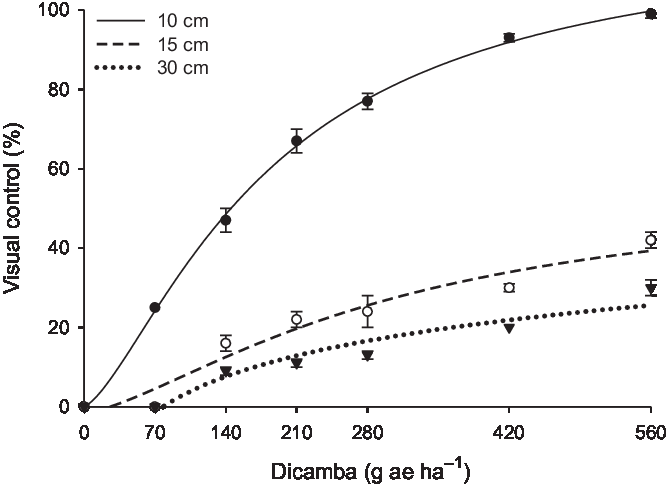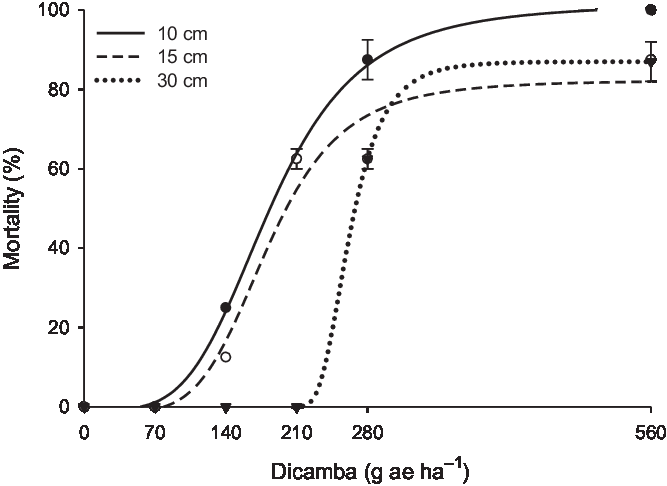In the original publication of this article, the figure legends for Figures 1 and 2 misidentified which line in each graph corresponded to which treatment. Correct versions of the figures appear below.

Figure 1. Amaranthus palmeri control (visual rating, %) at 4 wk after treatment with dicamba as influenced by plant height at time of herbicide application in a field study conducted at Kansas State University Southwest Research–Extension Center, Garden City, KS, in 2016 and 2018.

Figure 2. Amaranthus palmeri control (mortality, %) at 4 wk after treatment with dicamba as influenced by plant height at time of herbicide application in a greenhouse study at Kansas State University, Manhattan, KS, in 2017 and 2018. Mortality is the percentage of plant death following dicamba application.
The authors apologize for this error.




